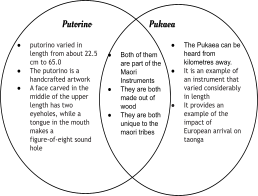- Why is the sound of the putorino said to be inspired by the case moth?The case moth is inspired by the Te Kokiri Atane the male voice and Te Tewaiotehine the female voice. Do you think this is a true story? This story is true. Why do you think that? I think that the story is true because of all the different and unique instruments and about how Shane James had told us about the female and the male voice.
2. Describe the sounds the putorino can make and how they are produced. The putorino is produced when the male voice is when you put your mouth in and blow, it sounds like the trumpeting note used to summon or signal something happening. The female voice is when you put half of your mouth and blow. What do the different sounds represent? The sounds represent the female and the male voice. Use the 'Comparisons' response template to compare the sounds of the putorino with another wind instrument, such as the flute or trumpet.
3. Shane says many putorino have lain dormant in museums for many years, until recently. What does he mean by this? Shane means that the putorino has been laid asleep in museums and that some of their sounds have been recovered and also that they are important to carvers. Why are there no records of how putorino were made and used? There are no records because they did not have technology like cell phones or recorders or cameras, this would mean that the Maori people used to write things down and people like us now don’t really know about how they used to .
4. There has been a renewed interest in making and playing traditional Māori instruments. Why do you think people have taken a greater interest in recent years? They have taken greater interest because the putorino is a really unique and inspiring to other people like carvers when they are wanting to make other instruments they use the putorino as like an example for other Maori instruments. Where can they learn more? They can find more by going to museums and looking at traditional and unique and ancient Maori instruments or they can just ask their parents or grandparents, ancestors about the putorino.
5. Most cultures have used musical instruments for centuries. Find out more about taonga puoro, or the traditional instruments of a different culture. The instrument that I chose was from the country Ireland, the harp.
Fact 1: The harp represents a huge sound box carved from a solid block of wood a heavy, curved neck and a deeply in curved fore pillar
Fact 2: The harp was made to bear great tension from the heavy brass strings. 
Fact 3: The Trinity college harp and the Queen Mary’s Harp are the oldest surviving Celtic harps and both date from the 15th or 16th centuries and illustrate the similarity between the Irish and Scottish harps
Fact 4: Harp comes from the word meaning to pluck. Ireland was famous throughout Europe because of their music playing.
Fact 5: During the 1890's and early 19000’s, some small harps were made in Ireland but they only unsure resembled the ancient Irish harp with the big glorious sound.
1 comments:
Hi Anna
You have a awesome writing about insturment the maori one's i mean
Post a Comment
Note: only a member of this blog may post a comment.